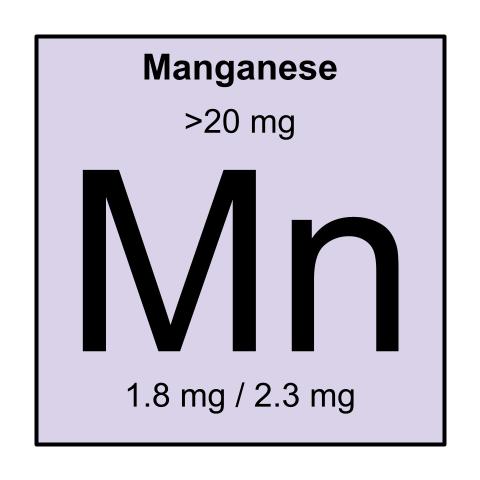Manganese is important for making bone, connective tissue, blood clotting factors, and sex hormones. It is involved in fat and carbohydrate metabolism, calcium absorption, blood sugar regulation, and brain and nerve function. It is mostly located in the bones, liver, kidneys and pancreas. Sources include mussels, wheat germ, tofu, sweet potatoes, nuts, brown rice, lima beans, chickpeas, spinach, and pineapples.
Quick Facts
-Important for making bone, connective tissue, blood clotting factors, sex hormones
-Involved in fat and carbohydrate metabolism
-Involved in calcium absorption, blood sugar regulation, and brain and nerve function
-Mostly located in the bones, liver, kidneys and pancreas [76][77]
RDI
Males 19 – 30 yrs: 2.3 mg
Females 19 – 30 yrs: 1.8 mg
[128]
Deficiency
-In other animals, symptoms include impaired growth, impaired reproductive function, skeletal abnormalities, impaired glucose tolerance, altered carbohydrate and lipid metabolism. In humans, low-manganese diet caused decreased serum cholesterol levels and skin rash [196].
Toxicity
-No reports of toxicity through diet, but through supplements rarely toxicity may happen. Some vegetarian diets may provide up to 20 mg/day
-High levels in contaminated water can cause neurological symptoms [197].
Sources
Mussels, wheat germ, tofu, sweet potatoes, nuts, brown rice, lima beans, chickpeas, spinach, pineapples [76][77]


